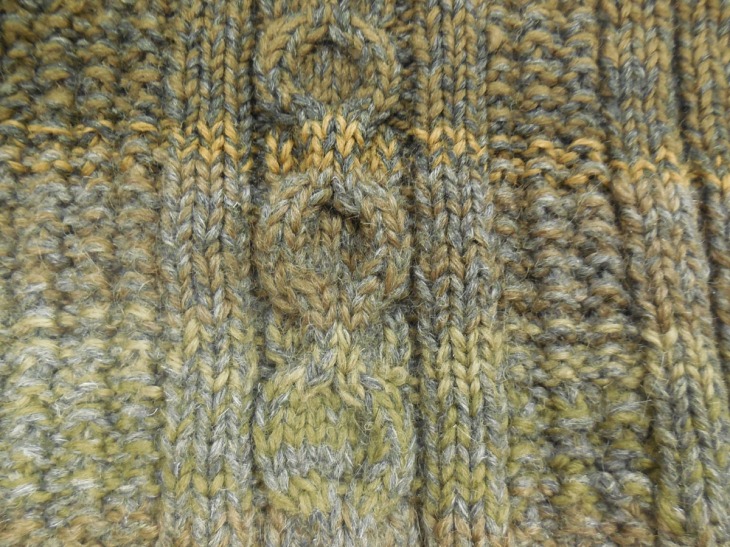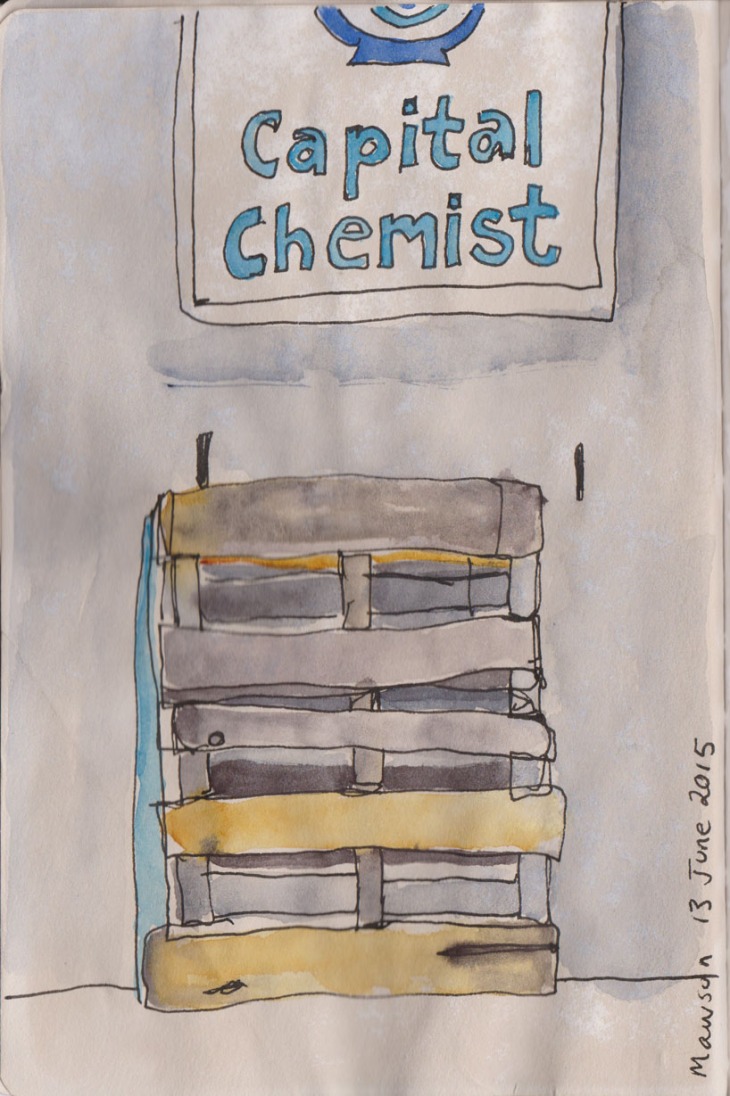A friend recently told me about a jumper (pullover) she thought I might be interested in. It belonged to an Australian soldier who made it when he was a prisoner of war in Germany during the First World War. The jumper was made, very skillfully, of many strands of wool gathered from comfort packages. As I often work with re-cycled fabric and find signs of the history on a garment of great interest I decided to see what more I could find out about these items. Which led me to where I was a few days ago – standing with one of the curators from the Military Heraldry and Technology section of the Australian War Memorial (AWM) with two archive boxes in front of me.
It turns out that the AWM has a number of similar items in its collection. I located them through the Memorial’s online collection search facility. I had requested access to two items (the one my friend mentioned is currently on display in the First World War galleries), a hand-knitted jumper made by another WWI prisoner of war; and a Second World War pullover, which had been improvised by an Australian soldier held prisoner of the Japanese in Singapore, Burma and Thailand.
To do each item justice I will look at them in turn, starting with the First World War knitted pullover made by Lance Corporal Percy Augustus Burge, 14 Battalion AIF (Australian Imperial Forces). Lance Corporal Burge, who was 18 when he enlisted, was captured at Bullecourt after being wounded in the legs by a grenade and also sustaining a shrapnel wound to the kidneys. After a period in hospital being treated for his wounds he spent time in two POW camps. This garment was made from the wool from worn out socks and was knitted on needles made from wire.
As the curator pulled it out of its box it became clear that this is one of the most beautiful jumpers I have ever seen. The colours are amazing and even these photographs don’t do justice to how bright the colours appeared. The whole piece is worked in two strands of wool. It was like Lance Corporal Burge had knitted all the colours of a lichen-covered boulder into this one garment. The colours used include varying shades of grey, soft ochres, browns and rusty oranges, khakis and other greens. I counted 15 colour changes on the body of the jumper alone.
The jumper appears to be a classic gansey style with the body knitted in the round and gussets under the arms. There are several cable patterns on the body and the sleeves and another stitch which has been identified as blackberry stitch, but that a friend has been suggested is in fact a broken rib stitch. Looking at the two types of stitch online I’m inclined to agree that it is the reverse side of broken rib stitch, (an image of which can be seen here).
This is a beautifully knitted garment. Although there is no information that says whether Lance Corporal Burge could knit before he became a prisoner I suspect that he could. ****It turns out that I am wrong. Staff at the AWM have since checked the detailed information associated with this item and it said that Lance Corporal Burge didn’t knit prior to his internment.**** Whether he was an artist is any other part of his life I do not know but he certainly had the eyes of a natural colourist.
I took some photos of the jumper along to my hand-spinning group and we had a lively discussion about whether the wool was commercially produced and whether they would have been using synthetic or plant dyes for colouring. I can at least answer the first question as there were certainly woollen mills operating in Australia since the 19th century. Waverly Woollen Mills near Launceston, was founded in 1874 and in Sydney, the Vicars Woollen Mill moved to their Marrickville premises in 1893. Vicars also had the contract for supplying the National Military Training Scheme contract in the First World War. Looking at the grey wool that features throughout the jumper we wondered whether it was spun directly from a grey fleece rather than being a dyed yarn. We also wondered, given this garment was made from worn out socks and suchlike, whether there is a possibility that some of those yarns could have been made from handspun yarn. I don’t know.
I had a quick look at some of the other records held by the AWM and was interested to see that on being repatriated to England in 1918 Lance Corporal Burge’s condition was summarised as “Wounds healed. Feels well.”
Percy Augustus Burge lived until 1970.




















